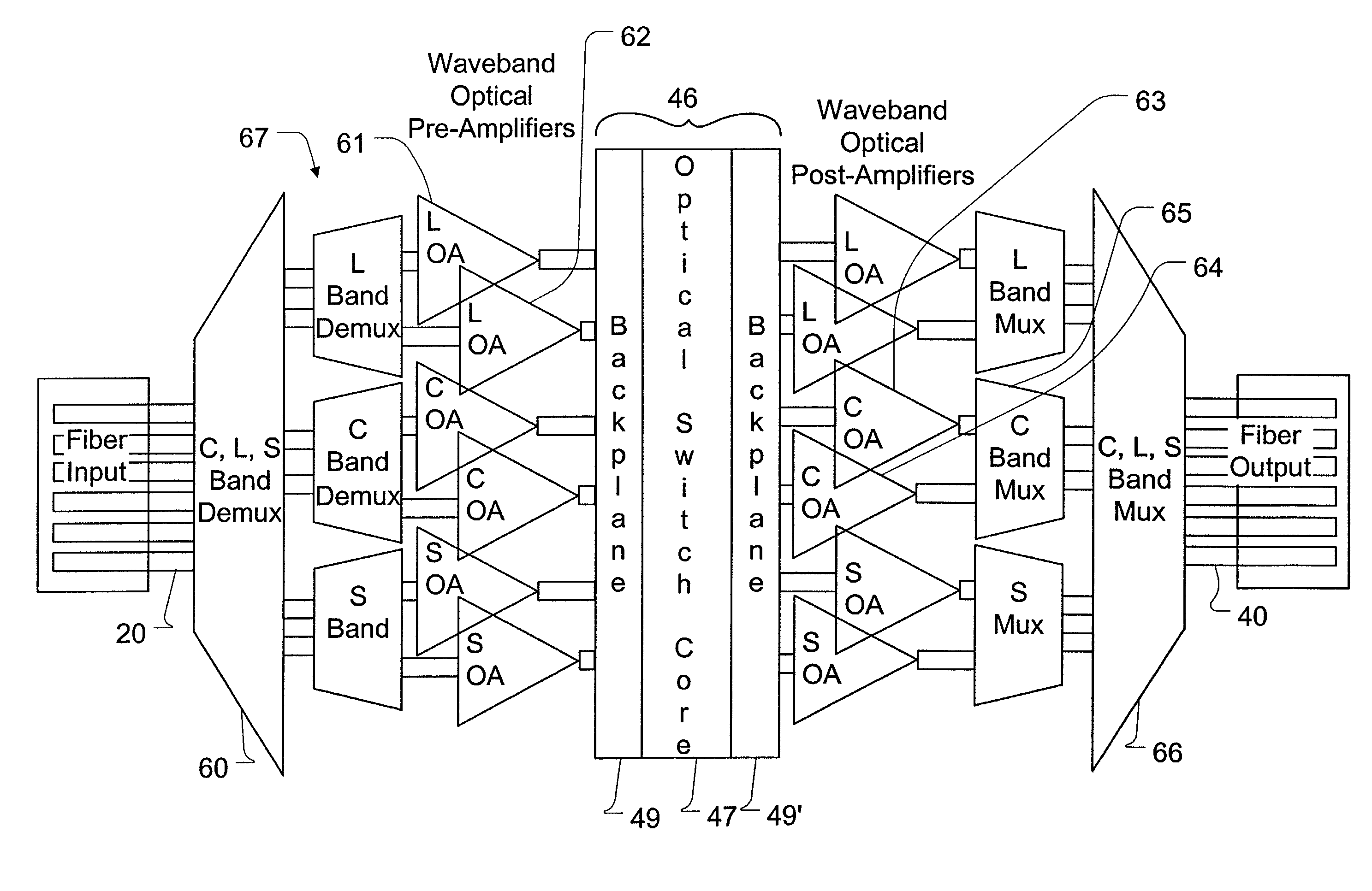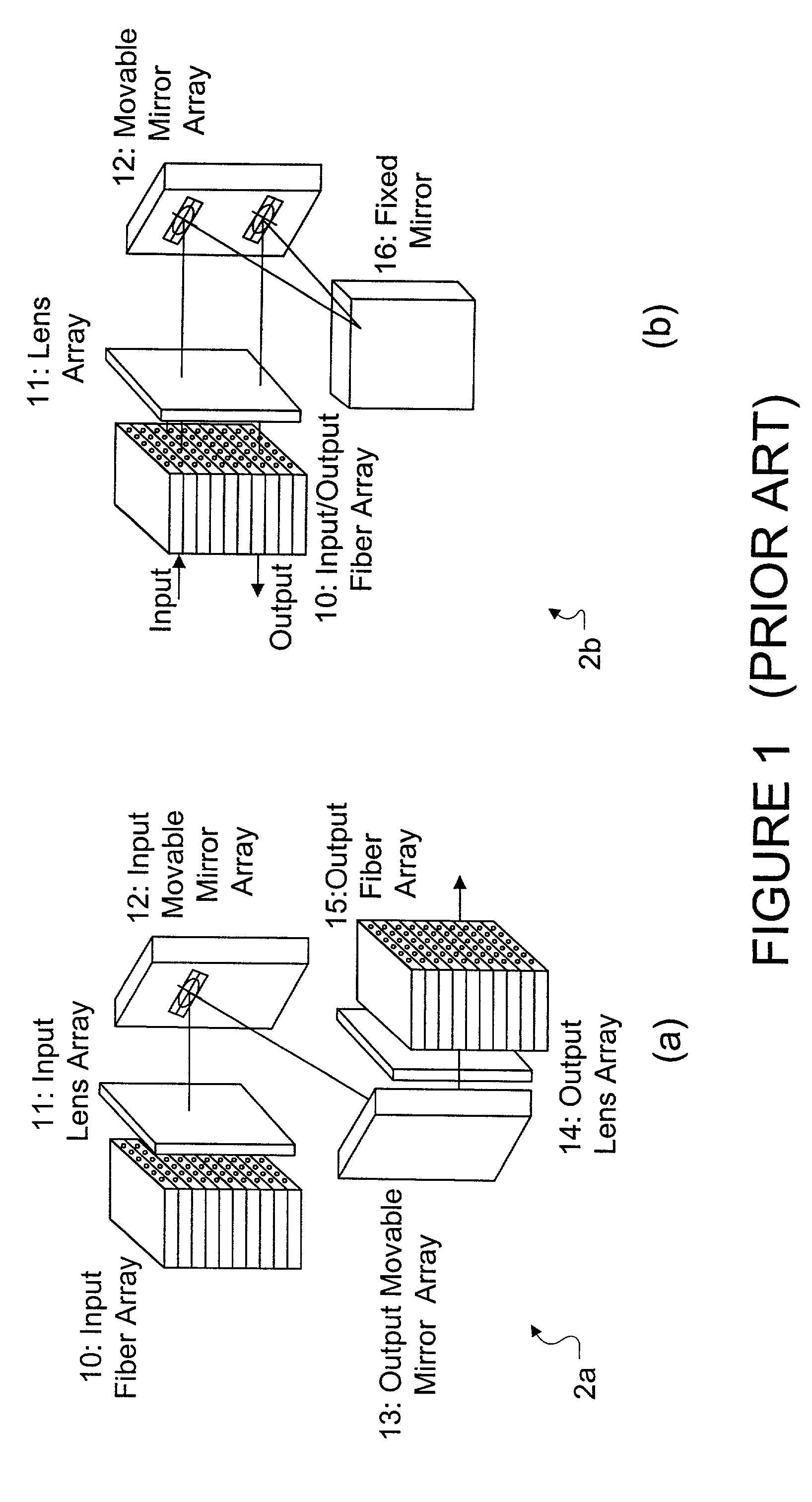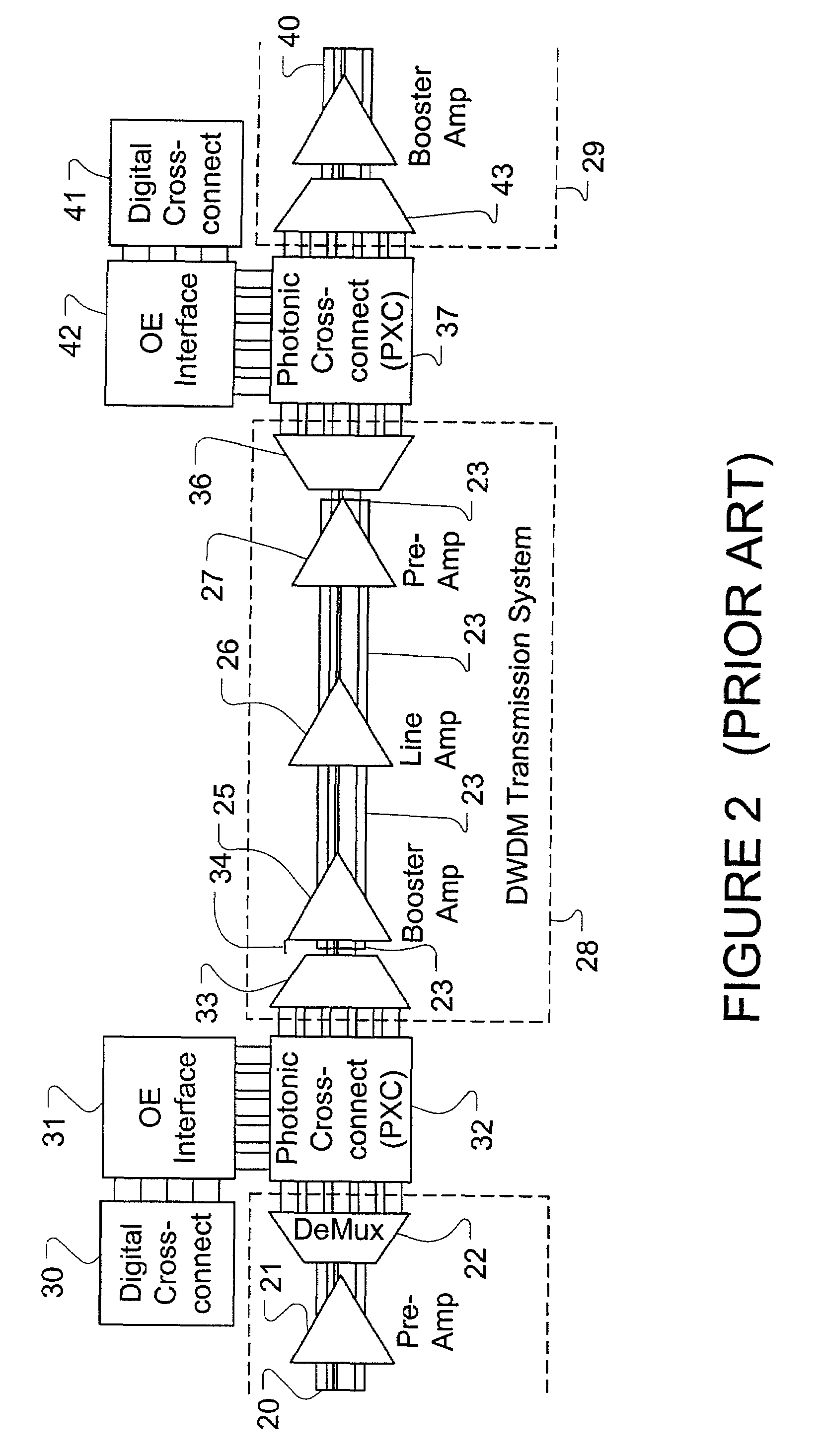Optical amplification in photonic switched crossconnect systems
- Summary
- Abstract
- Description
- Claims
- Application Information
AI Technical Summary
Benefits of technology
Problems solved by technology
Method used
Image
Examples
Embodiment Construction
[0036]This invention relates to the provision of optical amplification within a MEMS switch. Present MEMS switches, such as the Calient DiamondWave™ photonic switch, do not include optical amplification. Thus, there is some loss in signal during the switching process. By providing optical amplification, a no-loss switch, or an amplified switch, is provided. This facilitates overcoming a number of problematic applications, such as increasing the size of a PXC switch beyond 1,000 by 1,000 (a size at which losses become significant), allowing a PXC switch to act as an active or passive wavelength equalizer or regenerator, boosting output power to a desired level to allow easier scaling and design of all-optical networks, etc.
[0037]FIG. 3 illustrates a first embodiment of the invention in which optical amplification is performed between demultiplexer 45 and PXC 46. As shown in FIG. 3, the optical fiber or fibers 20 are supplied to the wavelength division demultiplexer 45, and then throu...
PUM
 Login to View More
Login to View More Abstract
Description
Claims
Application Information
 Login to View More
Login to View More - R&D
- Intellectual Property
- Life Sciences
- Materials
- Tech Scout
- Unparalleled Data Quality
- Higher Quality Content
- 60% Fewer Hallucinations
Browse by: Latest US Patents, China's latest patents, Technical Efficacy Thesaurus, Application Domain, Technology Topic, Popular Technical Reports.
© 2025 PatSnap. All rights reserved.Legal|Privacy policy|Modern Slavery Act Transparency Statement|Sitemap|About US| Contact US: help@patsnap.com



